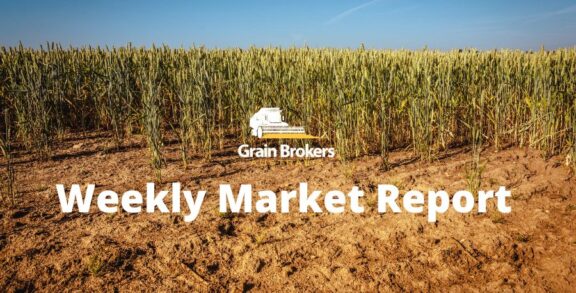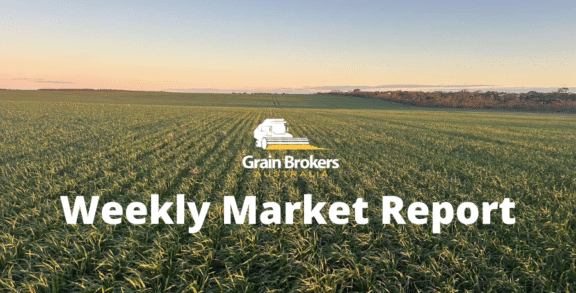
As this season’s southern European winter crop harvest ramps up, production in the Black Sea Balkan states of Bulgaria and Romania is expected to increase in 2024, largely due to favourable growing season weather. This is in stark contrast to the fate of the Russian crop on the opposite side of the Black Sea which has suffered greatly at the hand of extremely hot and dry spring weather extremes.
Bulgaria has enjoyed beneficial growing conditions so far this season, with the crop planted on time across most regions despite some localised soil dryness. A relatively mild winter was followed by an unusually warm period in early April. However, persistent rainfall and cooler-than-average spring conditions prevailed in the second half of April and through May, supporting crop development.
Soil moisture reserves have been optimal in most regions during the flowering and grain-fill periods, with satellite imagery pointing to above-average biomass accumulation across most of the country. The vegetation index (NDVI) indicates better crop development than last year, and yield expectations remain optimistic. Nevertheless, the crops are significantly advanced (as much as 2-3 weeks), and this year’s harvest has commenced early.
The area planted to wheat fell slightly season-on-season from 1.2 to 1.15 million hectares after dry and warm autumn weather hampered the seeding campaign in isolated pockets. According to the USDA’s Sofia-based Foreign Agricultural Service, this year’s wheat crop is expected to be 6.9mmt, putting the yield at 6.0 metric tonne per hectare. This is at the high end of industry expectations, 9.5 per cent above the European Commission’s May forecast of 6.3mmt, reflecting the favourable spring weather conditions across most of the country through the grain-fill period.
New crop barley production in Bulgaria is expected to increase by 11.7 per cent compared to the 2023/24 season to 850,000 metric tonne, which is on par with the European Commission’s May forecast. A planted area of 165,000 hectares puts the average yield at 5.2mt/ha, up 10.7 per cent and 1.8 per cent, respectively.
Corn is Bulgaria’s main summer crop and the second-biggest cereal harvest each year. The planting campaign started early under favourable weather and soil moisture conditions. It advanced rapidly in the early stages, but the latter part of the program was hampered by unseasonably heavy rainfall in early and mid-May.
According to FAS-Sofia, Bulgaria’s farmers are adamant that investment in irrigation is a must due to climate change issues related to much lower snow cover in the winter and more frequent and longer summer droughts. Additionally, farmers believe climate changes have led to higher pest and disease burdens, while their choice of approved pesticides and herbicides is increasingly restricted due to stringent European Commission regulations.
The current production estimate from FAS-Sofia is 2.8mmt off an estimated planted area of 520,000 hectares. However, that will be subject to upward or downward revision, depending on the July and August weather after drought negatively impacted production in each of the past two harvests. The European Commission is far more optimistic, calling the crop 3.7mmt off a higher planted area of 560,000 hectares.
Planting operations in Romania were delayed in the autumn due to unseasonal dryness in some regions and copious rains in others. Abundant rainfall was received in the country’s west, whereas limited rainfall was available in the country’s south and southeast. Some late planting occurred into December as the soil moisture profile in some of the dryer areas improved, and the extremely wet areas dried out enough for fieldwork to proceed. Romanian farmers are reportedly favouring more winter crops such as wheat and barley at the expense of corn, and as much as 30 per cent of this season’s rapeseed area was not planted in some regions due to dry soil conditions.
Recent soil moisture maps indicate a mild deficit in the eastern areas bordering the Black Sea but show more favourable soil moisture reserves in the west, central and southern areas. Remote sensing observations are positive overall, with the crop benefitting from early spring growth in most regions. Above-average temperatures combined with beneficial April and May precipitation accelerated phenological development and crop maturity in most areas.
Improved yields in Romania, the European Union’s fourth largest grain producer, are widely expected to see record wheat production of 10.5 million metric tonne in 2024/25, surpassing the previous record of 10.3mmt set in the 2021/22 season. This compares to 2023/24 output of 10.1mmt and is 1mmt higher than the European Commission’s May forecast. The higher production outlook year-on-year reportedly results from a slight increase in area to 2.27 million hectares, the highest since 2005/06, and an increase in yield from 4.46mt/ha to 4.6mt/ha. Early wheat harvest yields are reportedly mixed, but it is still early days, and local traders remain optimistic.
The second biggest winter cereal crop in Romania is barley, which the European Commission pegged at 2.2mmt in its May update. This is down from a record 2.3mmt in 2023/24, with the planted area up and the projected yield down fractionally compared to last season.
The Romanian rapeseed crop is expected to be 1.6mmt, down 9.3 per cent year-on-year. With an extremely dry seedbed at planting, some farmers switched to alternate winter and spring crop options, pushing the seeded area down 13.4 per cent to 590,000 hectares compared to 2023/24. The current yield projection is 5.7 per cent lower.
Corn is Romania’s primary summer crop and normally the biggest cereal harvest each season. The European Commission is currently predicting an increase in annual production of 13.3 per cent to 12.3mmt, with the planted area up 7.9 per cent to 2.5 million hectares and the projected yield 5 per cent higher at 4.91mt/ha.
With new crop wheat production in fellow Black Sea producers Russia and Ukraine down around 20mmt collectively, compared to 2023/24, global consumers relying on Black Sea and European exports will look to countries like Bulgaria and Romania to fill the void. Their willingness to participate was demonstrated in the latest Egyptian tender, with the two Balkan states claiming 70 per cent of the 400,000 metric tonne purchased.
Call your local Grain Brokers Australia representative on 1300 946 544 to discuss your grain marketing needs.
Written by Peter McMeekin.





